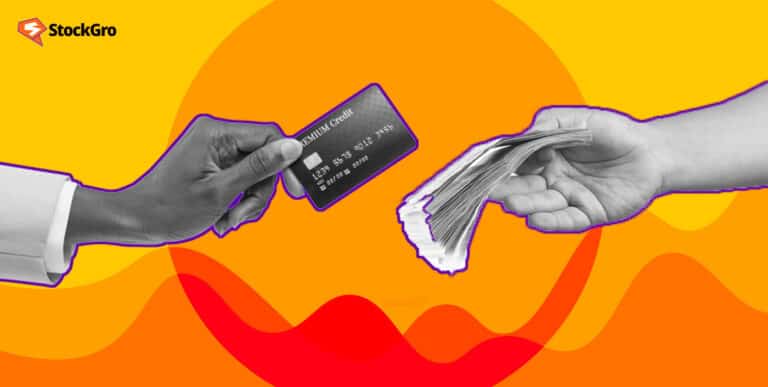
You have just received a hefty bonus at work. What’s next? You decide to upgrade your lifestyle – swapping your old smartphone for the latest model, dining at upscale restaurants, and even considering a new car. While these upgrades bring immediate gratification and a sense of achievement, you gradually notice that your savings aren’t growing as expected despite your increased income. This, in essence, is lifestyle inflation.
Lifestyle inflation can be tricky, gradually affecting your financial goals without you even noticing. In this blog, we will explore what lifestyle inflation truly means and how it can impact your personal finance.
Also read: What is personal finance, and why is it important?
What exactly is lifestyle inflation?
Lifestyle inflation, also known as lifestyle creep, is living slightly beyond your means, where your lifestyle gradually exceeds your budget. This can start small, like eating out more frequently, but can quickly escalate, impacting your money management significantly.
Moreover, this often happens without you realising it. While it can involve significant expenses like housing, it’s more commonly observed in smaller, everyday expenditures – dining out, clothing, and leisure activities.
Signs of lifestyle inflation
Recognising lifestyle inflation can be deceptive as it gradually creeps up on you. However, being aware of the signs can help you identify and manage them effectively. Here are some indicators to look out for:
- Stagnant savings despite increased income: If your income has seen a significant rise but your savings haven’t budged, this is a classic sign of lifestyle inflation. Ideally, as your earnings grow, so should your savings. If that’s not happening, it’s time to reassess your spending habits.
- General increase in spending: Notice a pattern where you are consistently spending more in various areas, not just on necessary upgrades like a better living space or a reliable vehicle. This broad increase in expenditure across different aspects of your life is a key indicator of lifestyle inflation.
- Lack of financial awareness: If you’ve loosened your grip on budgeting or if checking your bank account balance or credit card statements makes you feel uneasy, these could be signs that your financial management is off track. A healthy financial plan means knowing where your money is going and ensuring that it aligns with your long-term goals.
- Living paycheck to paycheck: Without financial planning even with a higher income, if you find yourself waiting eagerly for the next payday to meet expenses, it’s a sign that lifestyle inflation might be taking a toll on your financial health.
- Using savings or credit cards for regular expenses: Regularly using your savings or relying on credit cards for everyday expenses can indicate that your lifestyle costs might be exceeding your income.
- Frequent financial surprises: If you often find yourself puzzled about where your money went, it’s likely a sign that lifestyle inflation is happening. Keeping a budget and tracking expenses can help you stay on top of your finances.
Why lifestyle inflation happens?
Lifestyle inflation typically occurs when people start spending more as their income increases. This can be for several reasons:
- Psychological need to treat yourself: Especially after periods of hard work or economic difficulties like during the pandemic, there’s a psychological tendency to indulge in treats. With an increased income, these ‘treats’ can become more extravagant and frequent .
- Peer pressure and social comparisons: It’s common to compare your lifestyle with that of your peers. This social comparison can lead to increased spending to keep up appearances or maintain a certain status within your social circle.
- Becoming used to higher spending: As your income grows, you gradually get used to spending more. Over time, what once seemed like a luxury becomes the new normal. This desensitisation to spending can make it hard to cut back later and affect long-term financial success.
- Advertising and Marketing: We are constantly bombarded with messages encouraging us to buy the latest products and enjoy luxurious experiences. These persuasive marketing tactics can lead to impulse buying and a gradual increase in spending.
- The impact of social media: Social media plays a considerable role in lifestyle creep, fostering a culture of comparison and conspicuous consumption. It can lead to unrealistic benchmarks for success and lifestyle, compelling individuals to spend beyond their means to emulate others.
Consequences of lifestyle inflation
Lifestyle inflation, coupled with retail inflation, can initially seem harmless but potentially leads to significant long-term impacts on your financial health.
- Limited financial flexibility: As you get used to a higher standard of living, your financial plans become tightly tied to a higher income level. This dependency reduces your ability to adapt to changes in income or unexpected financial challenges.
- Savings take a backseat: With more money going towards immediate pleasures and comforts, the amount funnelled into savings or retirement funds often diminishes. This shift in priority can leave you less prepared for future needs or unexpected financial emergencies, such as job loss.
- Growing debt: Relying on credit cards or loans to maintain your upgraded lifestyle can result in mounting debts. The accumulating interest on these debts can create a cycle of dependency that hinders your financial freedom.
- Opportunity Costs: Spending more on lifestyle luxuries means missing out on other potential uses for your income. This could include investing in personal development, exploring new hobbies, or creating experiences that might hold more long-term value.
You may also like: Your comprehensive guide to successful share market investing
Overcoming lifestyle inflation
Here are practical ways for avoiding lifestyle creep and living within means:
- The ‘backwards budget’ approach: Analyse past expenses to distinguish essentials from non-essentials.
- Establish a budget: Next, create and stick to a budget. Adherence to a budget is crucial in preventing unnecessary expenditures.
- Delay gratification: Instead of impulse buying, practice delayed gratification. Wait a bit before making a purchase to determine its true necessity.
- Avoid debt: Debt can derail your financial progress. Avoid any unnecessary expenses on credit cards and concentrate on repaying the existing debt.
- Savings goal setting: Define your long-term financial goals, such as retirement savings or a house deposit. Prioritise these goals in your budget.
- Automate savings: Setting up automatic transfers to your savings or investment accounts can help you save effortlessly. This method ensures you are regularly setting money aside before you’re tempted to spend it.
Also read: What is a budget – A beginner’s guide
Bottomline
Overcoming lifestyle inflation is not about wealth accumulation but about striking a balance between enjoying your present life and securing your future. It calls for awareness, financial discipline, and a commitment to long-term financial well-being.
By recognising the subtle shifts in your spending patterns, setting clear financial boundaries, and prioritising savings strategies and investment decisions, you can ensure that your growing income leads to increased financial security, not just elevated expenses. The true value of your income isn’t measured by the luxury it can buy today, but by the financial freedom and peace of mind it can provide tomorrow.

